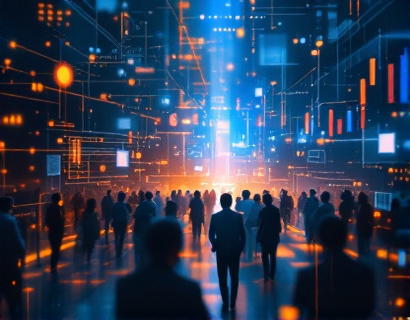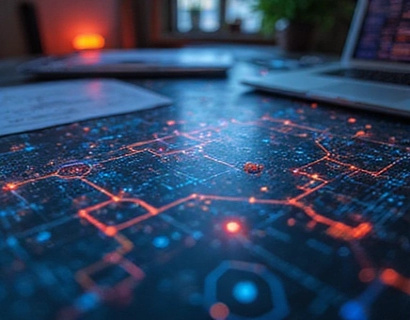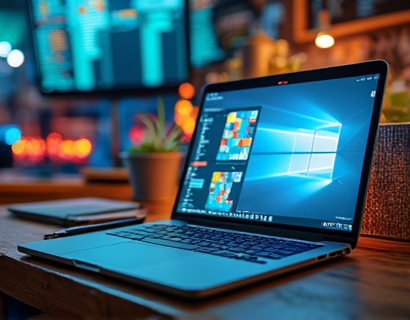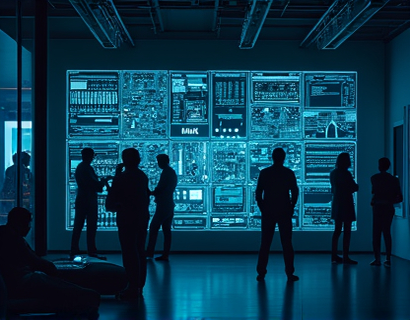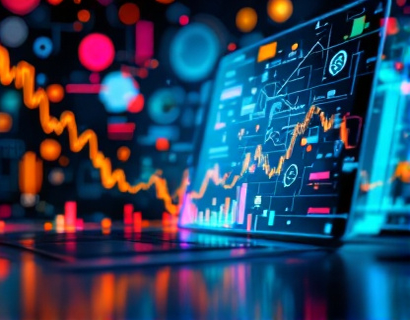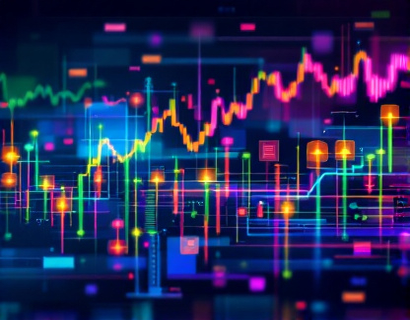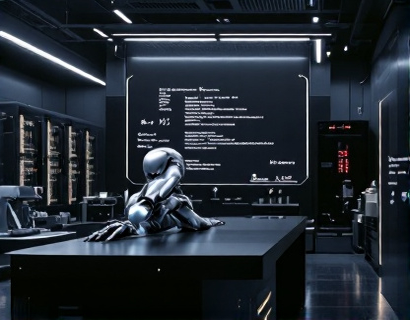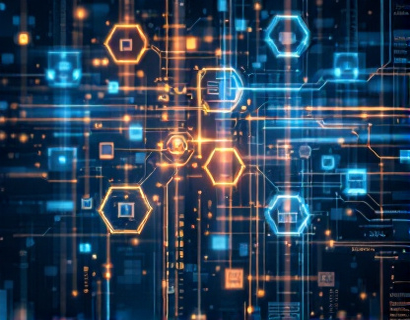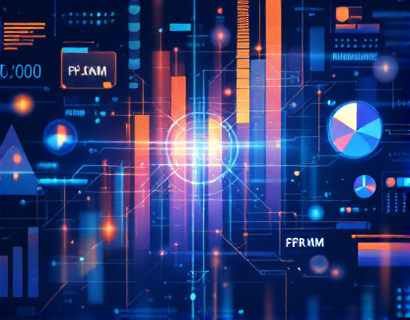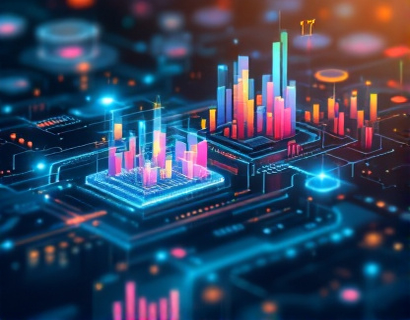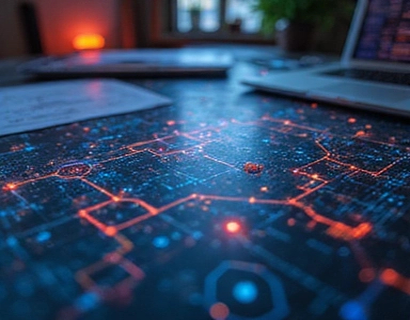Transforming User Engagement in the Ucosystem: The Synergy of Blockchain and AI
The intersection of blockchain technology and artificial intelligence (AI) is giving rise to a new era of digital engagement, fundamentally reshaping the tech ecosystem. This fusion is not just an incremental advancement but a transformative shift that enhances user experiences, fosters innovation, and opens up unprecedented opportunities for tech enthusiasts and early adopters. As we delve into this topic, it's essential to understand how these advanced technologies are synergizing to create more interactive, secure, and efficient digital environments.
Understanding Blockchain and AI
Blockchain technology, at its core, is a decentralized ledger that records transactions across multiple computers in such a way that the registered transactions cannot be altered retroactively. This inherent transparency and immutability make blockchain an ideal foundation for building trust in digital interactions. On the other hand, AI involves the simulation of human intelligence processes by machines, particularly computer systems. These processes include learning (the acquisition of information and rules for using it), reasoning (using rules to reach approximate or definite conclusions), and self-correction.
The combination of these two technologies creates a powerful toolset for enhancing user engagement. Blockchain ensures that interactions are secure and verifiable, while AI provides the intelligence to analyze user behavior, preferences, and patterns, enabling personalized and dynamic experiences.
Enhancing Security and Trust
One of the most significant benefits of integrating blockchain with AI is the enhancement of security and trust in digital platforms. Blockchain's decentralized nature means that there is no single point of failure, making it highly resistant to cyber attacks. AI can further bolster this security by continuously monitoring for anomalies and potential threats, using machine learning algorithms to detect and mitigate risks in real-time.
For instance, AI-driven security systems can analyze vast amounts of data to identify unusual patterns that might indicate a security breach. These systems can then automatically trigger protocols to secure the network, ensuring that user data remains protected. This level of security is crucial for building trust among users, especially in the realm of cryptocurrency and financial transactions where security concerns are paramount.
Personalized User Experiences
AI's ability to process and analyze large datasets makes it an invaluable asset for creating personalized user experiences. By leveraging blockchain, these experiences can be both secure and transparent. For example, AI algorithms can analyze a user's interaction history, preferences, and behavior to provide tailored content, recommendations, and services.
In the context of the Ucosystem, this means that users can enjoy a seamless and customized experience across various applications and services. Whether it's accessing decentralized applications (dApps), participating in governance tokens, or engaging with community-driven projects, AI ensures that each interaction is relevant and valuable. This personalization not only enhances user satisfaction but also increases engagement and retention.
Decentralized Identity Management
Another critical area where blockchain and AI converge is decentralized identity management. Traditional identity systems are centralized, making them vulnerable to breaches and misuse. Blockchain-based identity solutions, enhanced by AI, offer a more secure and user-controlled approach.
AI can help manage and verify digital identities by analyzing biometric data, behavioral patterns, and other relevant information. This ensures that only authorized users access specific services, while also providing users with control over their personal data. Blockchain ensures that these identities are immutable and tamper-proof, reducing the risk of identity theft and fraud.
Smart Contracts and Automated Interactions
Smart contracts, self-executing contracts with the terms directly written into code, are a cornerstone of blockchain technology. When combined with AI, smart contracts can become even more intelligent and responsive. AI can analyze conditions and execute smart contracts based on real-time data and user behavior, automating complex processes and reducing the need for intermediaries.
For example, in the context of the Ucosystem, smart contracts can automate payments, content delivery, and access control based on predefined criteria. AI ensures that these contracts are executed efficiently and accurately, adapting to changing conditions and user preferences. This automation not only streamlines operations but also enhances the overall user experience by reducing friction and increasing reliability.
Fraud Detection and Prevention
Fraud remains a significant challenge in digital ecosystems, affecting everything from financial transactions to content authenticity. The combination of blockchain and AI offers robust solutions for detecting and preventing fraudulent activities. AI algorithms can analyze transaction patterns, user behavior, and network activity to identify suspicious patterns and anomalies.
Blockchain's transparency and immutability ensure that all transactions are recorded and verifiable, making it easier to trace and address fraudulent activities. For instance, in the context of cryptocurrency trading, AI can monitor for signs of wash trading, market manipulation, and other illicit activities. When detected, these systems can automatically take action to prevent further fraud, ensuring a fair and secure environment for all users.
Enhancing Content Creation and Distribution
The creative industry stands to benefit greatly from the synergy of blockchain and AI. Content creators can use blockchain to prove ownership and authenticity of their work, while AI can help in generating, curating, and distributing content more effectively. For example, AI-powered tools can analyze user preferences to recommend content, while blockchain ensures that creators are fairly compensated for their work.
In the Ucosystem, this means that artists, writers, and other creators can publish their work on decentralized platforms, ensuring that they receive direct payments and recognition. AI can further enhance this process by creating personalized content recommendations, increasing engagement and discovery for both creators and consumers.
Community Governance and Tokenomics
Blockchain and AI are also revolutionizing community governance and tokenomics. Decentralized autonomous organizations (DAOs) leverage blockchain for transparent and democratic decision-making, while AI can optimize governance processes and token distribution. AI algorithms can analyze community feedback, voting patterns, and other data to suggest improvements and ensure that governance is both effective and fair.
In the context of the Ucosystem, this means that users can actively participate in shaping the platform's development and direction. AI-driven insights can help in designing token economies that incentivize positive behavior, foster community growth, and align the interests of all stakeholders.
Challenges and Considerations
While the potential of blockchain and AI in enhancing user engagement is vast, there are several challenges and considerations to keep in mind. Scalability remains a significant issue for blockchain technology, as many networks struggle to handle high transaction volumes efficiently. AI, while powerful, requires substantial computational resources and data privacy must be carefully managed to avoid ethical concerns.
Moreover, the integration of these technologies requires a deep understanding of both domains. Developers and organizations must invest in building expertise and fostering collaboration between blockchain and AI experts. Regulatory frameworks are also evolving, and compliance will be crucial as these technologies become more mainstream.
Future Prospects
The future of user engagement in the Ucosystem is bright, with blockchain and AI continuing to drive innovation and growth. As these technologies mature, we can expect even more sophisticated applications and integrations. The potential for creating immersive, secure, and personalized digital experiences is immense, opening up new frontiers for tech enthusiasts and early adopters.
In conclusion, the fusion of blockchain and AI is not just a technological advancement but a paradigm shift in how we interact with digital platforms. By enhancing security, personalization, and efficiency, these technologies are paving the way for a more engaging and equitable tech ecosystem. As we move forward, the synergy between blockchain and AI will continue to shape the future of digital interactions and app innovation.



